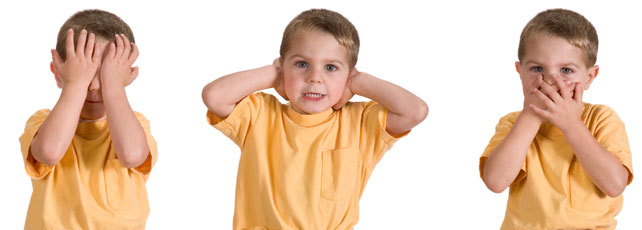Watch Your Words

SHARED by: Vicky McLaughlin, M.Ed, Director of Early Learning Foundations Preschool
A recent movement in progressive models of early childhood education encourages teachers to be dynamic in practice and improvisational in the language that they use in the classroom. The ability to be “in the moment” with very young children comes intuitively to most practitioners – going with the flow of the daily drama of a young child’s life is easy. Our enthusiasm in tone, affect and body language to help create an energy that is positive and dynamic.
Taking a few steps back and reflecting on the language used with young children can be a bit more challenging. Oftentimes there are “scripts” that are used to manage groups of children, which according to an improvisational model, are not appropriate in early childhood. Let me give you some examples:
“Use your words”
Yes, we all want children to use their emerging language skills to resolve conflict. However, when used in isolation, this phrase has very little meaning to a young child. It is not until language structures are firmly in place that children are able to self-regulate and use language before physical action. Modeling an emotional vocabulary and speaking on behalf of the child is best practice. Dropping the scripted phrase encourages language development and reassures children that their teachers will help them, leading to a more meaningful social interaction.
“You get what you get and you don’t get upset”
Actually, it is the job of the child to “get upset” and feel safe expressing their emotions. This common script is intended to manage outbursts and arguments, but is counterintuitive to creating classrooms where the child’s voice is valued and powerful. The truth is that in life we do not always like what “we get”-and that is OK. Our work in Early Childhood is to help children understand that it’s OK, and there will always be a next time, another turn and the opportunity to express their disappointment.
“I want to see ‘Quiet mouths and still bodies’”
Most often used during circle and story times, this script is definitely one that needs to be eliminated from our teaching practice. Young children are defined as being ruled by motor impulses. They need to move their bodies in order to learn, and as curious learners, they should be able to ask questions during “instruction time.” The expectation that children should be able to remain quiet and still is unrealistic and contrary to what we know about developmental ages and stages.
As a hands-on director, I work hard to model improvisational responses to children’s behaviors. Just as each child is unique, I believe our interactions with them should be unique, as well.









